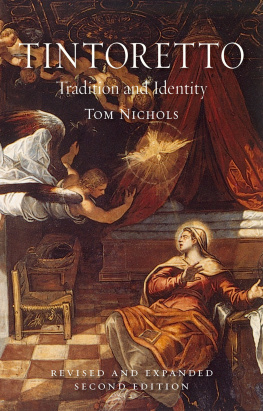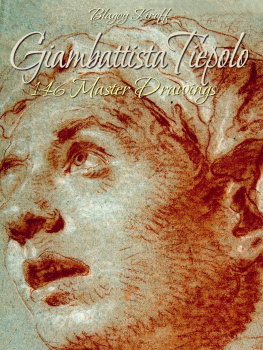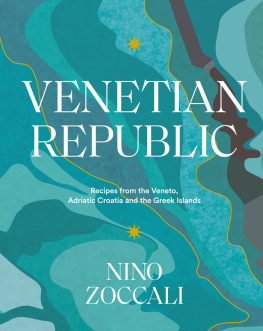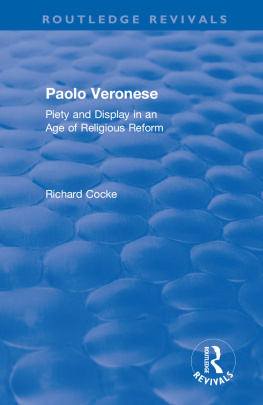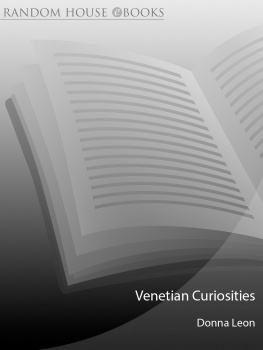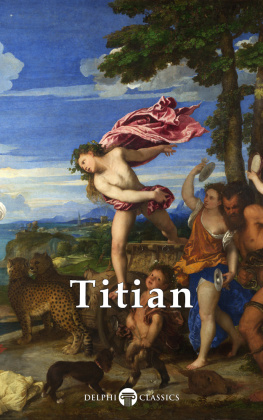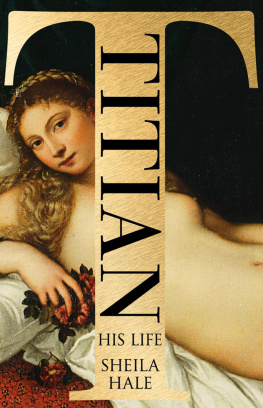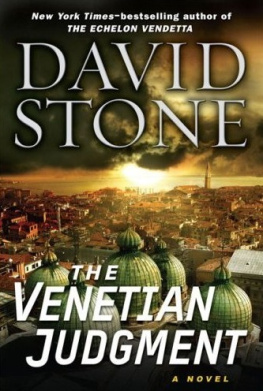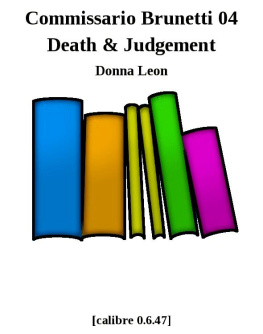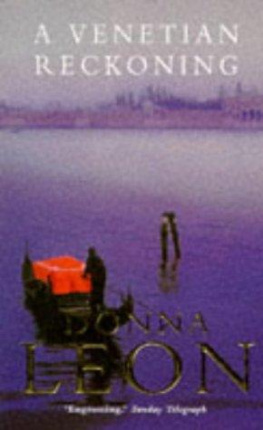Chronology
151819
Jacopo Robusti (Tintoretto) is born in Venice, son of the cloth dyer Giovanni Battista Robusti, who may have been a member of the Comin family from Brescia.
153039
Tintoretto may have entered the workshop of Titian (c. 14901576) during this period. But the apprenticeship lasts only a very short time, and it is likely that Tintoretto transfers to another Venetian workshop (possibly Bonifacio de Pitati) in order to complete his training. Tintoretto signs himself as Master Giacomo, painter in the Campo di S. Cassiano on an act of testimony dating from 22 May 1539, indicating that by this point he is already practising as an independent painter.
1540
Tintoretto paints the Virgin and Child with the Infant Baptist and Sts Joseph, Elizabeth, Zacharias, Catherine and Francis. He signs himself Iachobus near to a stylized symbol of a wheel, which is probably a reference to the process of dyeing and thus to the occupation of his father.
15414
Tintoretto fulfils a number of mostly minor commissions, including work on furniture paintings and facade frescoes (sometimes in collaboration with Andrea Schiavone, c. 151563) and an altarpiece for the trade Scuola of the Venetian Fishmongers. His most progressive pictures from this period are large-scale paintings of the new horizontal (laterale) type, such as the Conversion of St Paul and the Christ Among the Doctors. Perhaps his most prestigious commission is from the young Venetian patrician Vettore Pisani who orders a set of sixteen octagonal ceiling paintings for a room in his palace at San Paternian.
15456
On 15 February 1545 the famous Tuscan writer and man of letters Pietro Aretino, who had been resident in Venice since the sack of Rome in 1527, writes thanking Tintoretto for the two ceiling paintings he had made for the bedroom of his house on the Grand Canal (Palazzo Bollani). One of these, showing the Contest Between Apollo and Marsyas, is probably identifiable with the painting now in Hartford (Wadsworth Athenaeum). Three Tintoretto portraits (Nicola Doria, Gentleman Aged 25 and Bearded Man) date from these years.
15478
In August 1547 Tintoretto completes his first version of the Last Supper for the Venetian church of San Marcuola. His patrons are the Scuola del Sacramento attached to the church. Equivalent Venetian scuole of this humble parish-based type are subsequently to employ Tintoretto on at least eight further occasions in the course of his career. By April of the following year Tintoretto completes his Miracle of the Slave for the Scuola Grande di San Marco. The painting is controversial and is initially returned as unacceptable. In a letter, Aretino praises Tintorettos realism in the painting but also criticizes his hasty execution. Perhaps in response to Aretinos attack, Tintorettos long-standing friend and supporter in the Scuola di San Marco, the comic playwright Andrea Calmo (151071), writes to the painter praising his ability to portray a figure from nature in half an hour.
154953
Probably around 1550, Tintoretto marries Faustina, daughter of Marco Episcopi, whom he had met in the course of his commission at the Scuola Grande di San Marco (Marco Episcopi held office as Guardian da Mattin in the confraternity in 1547). In these years, Tintoretto consolidates his new-found status as a city-wide painter, fulfilling his first commissions for the Scuola Grande di San Rocco (1549) and the Augustinian Canons of San Giorgio in Alga (the organ shutters for the Madonna dellOrto, 15526). In 1550, Tintoretto works on his first recorded official commission for some portraits for the state procuracies, and this is followed in 15523 by votive paintings for the Palazzo dei Camerlenghi (Treasurers Palace), and a contribution to the ongoing Alexander cycle in the Sala del Maggior Consiglio of the Ducal Palace (probably showing the Excommunication of Frederick Barbarossa, destr.1577). Tintorettos professional friendship with Anton Francesco Doni (151374), the Florentine poligrafo resident at Venice, is at its height.
15548
Tintorettos eldest daughter, the painter Marietta (d. 1590), is probably born in 1554. In the following year the family are living in the district of San Marziale, where they rent the lower floor of a house owned by Baldissera di Mastelli. Tintorettos official paintings in the Palazzo dei Camerlenghi and the Ducal Palace are criticized in Francesco Sansovinos Delle cose notabili che sono in Venetia (1556, published under the pseudonym Anselmo Guisconi) and Ludovico Dolces Dialogo della pittura (1557). In 1556 Tintoretto is excluded from the commission to paint ceiling roundels in the Reading Room of the Libreria Marciana.
155961
In 1559 Tintoretto completes a second painting for the confraternity church of the Scuola Grande di San Rocco (The Pool of Bethesda). In the following year, he paints a portrait of Doge Girolamo Priuli for the Council of Ten, a commission which confirms his role as a leading state painter. Tintoretto and his workshop are almost continually employed in the official domain over the course of the following three decades. Tintoretto completes the Marriage at Cana for the order of the Crociferi in 1561. His two painter sons, Domenico (d. 1635) and Marco (d. 1637), are born in 1560 and 1561 respectively.
15626
In June 1562 Tommaso Rangone (14931576), Guardian Grande of the Scuola Grande di San Marco, commissions three further paintings from Tintoretto for the Sala Capitolare of the Meeting House. Around this time, Tintoretto is also at work on two enormous vertical canvases for the choir of Madonna dellOrto, apparently winning the commission by offering to make the paintings for the nominal sum of 100 ducats. In June 1564 Tintoretto donates a ceiling painting showing St Roch in Glory to the Scuola Grande di San Rocco. It is likely that his gift was offered as a means of collapsing an artistic competition organized by the scuola a few weeks earlier. Having completed the rest of the albergo ceiling, Tintoretto goes on to paint the huge Crucifixion in 1565, and three further paintings for the entrance wall in 15667. On 11 March 1565 he is admitted to the confraternity, going on to serve as deacon and syndic in the course of thenext eighteen months (the first of many positions he is to hold on the ruling bodies of the scuola). In October 1566 Tintoretto is admitted to the Florentine Accademia del Disegno.

